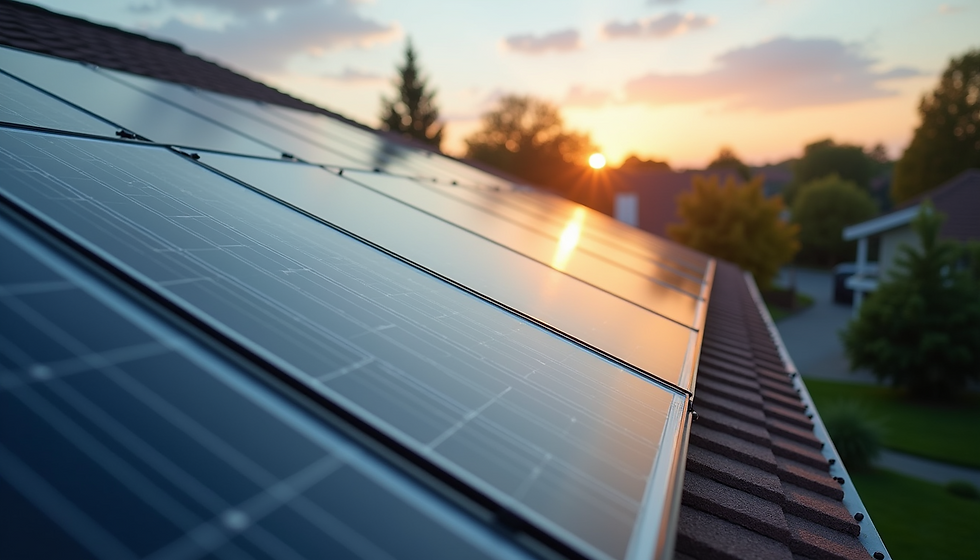Energy-efficient building - How to Reduce Energy Use with Smart Building Choices By Rachelle Barlow
- Rachelle Barlow

- Jun 7
- 3 min read
In today's world, reducing energy consumption is crucial for both the environment and our wallets. Smart building choices can significantly impact energy efficiency. Making informed decisions during the design, construction, and operational phases can lead to substantial energy savings. This blog post will delve into ways to minimize energy use through smart building strategies.
Understanding Energy-Efficient Building
Energy-efficient buildings are designed to use less energy while maintaining the same level of comfort and productivity. These buildings are not only better for the planet but also offer significant cost savings over time. By investing in energy-efficient options, property owners can reduce utility bills, lower maintenance costs, and even increase property value.
Moreover, energy-efficient buildings contribute to sustainability by lowering carbon emissions. This aspect is becoming increasingly important as we face climate change and environmental degradation. Implementing smart building choices can help achieve these goals effectively.

Smart Building Choices to Reduce Energy Use
Incorporating Renewable Energy Sources
One of the most effective ways to reduce energy use is to incorporate renewable energy sources such as solar panels or wind turbines. These technologies harness natural resources and convert them into clean energy. For instance, solar panels can significantly offset electricity costs, and modern systems are becoming increasingly efficient and affordable.
Buildings with solar energy can reduce energy costs by up to 30%. Moreover, the government often offer incentives for renewable energy installations, making them a financially prudent choice.

High-Performance Insulation
Another key aspect of energy-efficient building is the use of high-performance insulation materials. Good insulation helps maintain comfortable indoor temperatures by preventing heat loss in the winter and keeping heat out during summer.
For example, rigid foam boards such as Kingspan, provide superior insulation performance compared to traditional materials. Proper insulation reduces dependency on heating and cooling systems, leading to lower energy consumption.
https://www.kingspan.com/au/en/business-groups/kingspan-insulation/
Energy-Efficient Appliances and Systems
When selecting appliances for a building, choosing energy-efficient models is crucial. Look for appliances that have the ENERGY STAR label. These items adhere to rigorous efficiency standards and can save you a significant amount on your energy bills.
For heating and cooling, use programmable thermostats which can regulate temperatures based on occupancy, ensuring that energy isn’t wasted when spaces are unoccupied. Set timers and look for system that link to an app on your phone, so you can mage your home on the go!
What are Energy Efficient Techniques?
Energy-efficient techniques involve a range of strategies that optimize energy usage in buildings. Some of the most effective techniques include:
LED Lighting: Switching to LED bulbs can reduce energy consumption significantly. They use up to 75% less energy than incandescent lighting and last much longer.
Smart Building Technologies: Automating systems such as lighting, heating, and cooling can lead to significant energy savings. Smart sensors can adjust lighting based on natural light levels and occupancy, while smart thermostats can learn preferences and adjust settings to optimize energy use.
Water Conservation Practices: Using low-flow fixtures and rainwater harvesting systems can reduce energy used in water heating and distribution.
By implementing these techniques, buildings can operate more efficiently while simultaneously cutting down on energy costs.
Benefits of Energy-Efficient Building Practices
Implementing energy-efficient building practices brings several advantages:
Cost Savings: By reducing energy use, buildings lower their utility bills, which can lead to significant savings over time.
Environmental Impact: Decreasing energy consumption lowers greenhouse gas emissions. This shift contributes to a healthier planet for future generations.
Increased Property Value: Properties that boast energy-efficient features are often worth more than those that do not. As energy standards evolve, buildings that lack modern efficiency measures may depreciate in value.
Enhanced Comfort: Energy-efficient buildings tend to offer better temperature control and indoor air quality, enhancing occupant comfort.
By understanding and utilising these practices, you can create a more sustainable and economically viable environment.
Moving Forward with Energy Efficiency
Incorporating smart building choices and employing energy-efficient techniques are essential steps toward reducing energy consumption. The landscape of energy management is continuously evolving, with new technologies and ideas emerging regularly.
Look for opportunities to invest in energy-efficient options, whether it be upgrading appliances, improving insulation, or using renewable energy sources.
Every small step taken toward reducing energy consumption contributes to a bigger goal of sustainability. Embracing these changes keeps costs down and helps safeguard the environment.





Comments